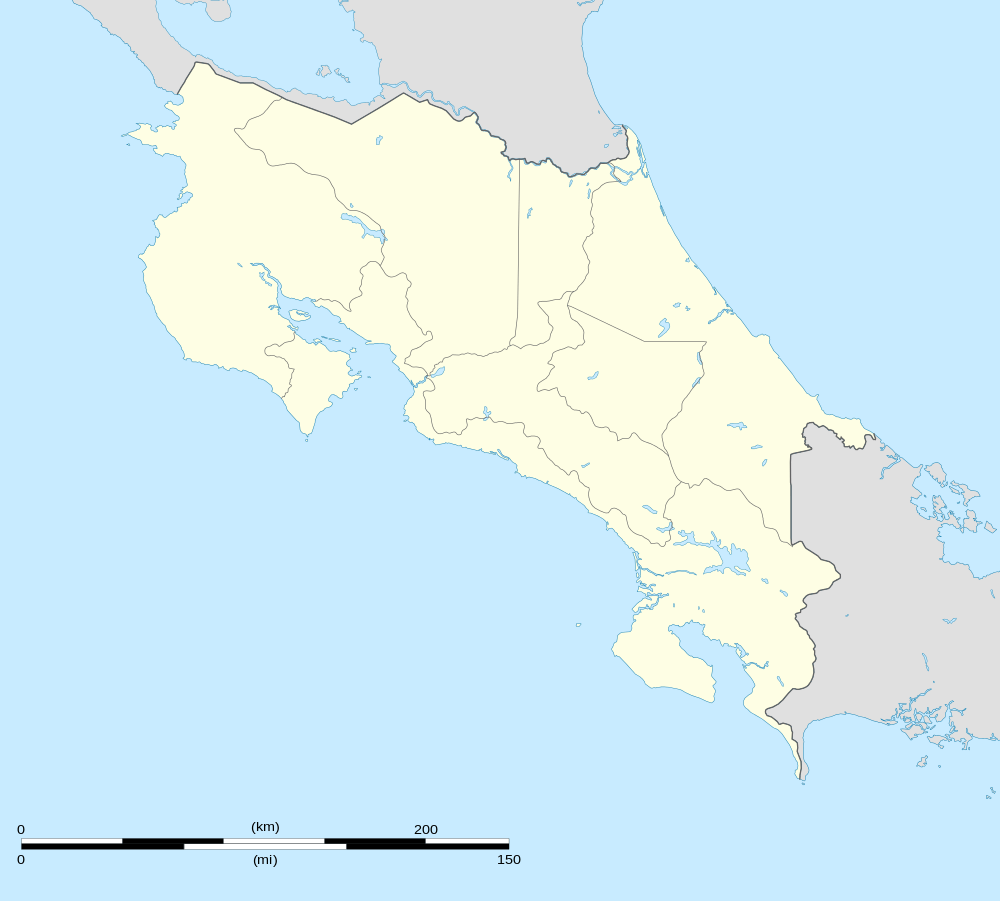Pital, San Carlos
Pital is the name of the district number 6 of the Canton of San Carlos, which in turn belongs to the province of Alajuela in Costa Rica.
Pital | |
|---|---|
District | |
 Pital | |
| Coordinates: 10°27′2″N 84°16′26″W | |
| Country | |
| Province | Alajuela |
| Canton | San Carlos |
| Area | |
| • Total | 375.43 km2 (144.95 sq mi) |
| Elevation | 100 m (300 ft) |
| Population (2011) | |
| • Total | 17,318 |
| • Density | 46/km2 (120/sq mi) |
| Time zone | UTC−06:00 |
| ZIP codes | 21006 |
Location
It is located in the northern region of the country and borders with 3 districts; Venice to the south, Cutris and Aguas Zarcas to the west. While to the north it borders with Nicaragua and to the east with the province of Heredia.
Its head, the city of Pital, is located 28.6 km (50 minutes) NE of Quesada (Costa Rica) and 91.9 km (2 hours 30 minutes) to NW of San José the capital of the nation.
Geography
Pital has an area of 375.43 km², which makes it the third district of the canton by area.
It is located at an elevation of 100 meters above sea level.
It is located at low altitude, because much of the district is located in the plains of San Carlos.
Demography
The district counts on 17, 318 inhabitants, turning it into the third most populated of the canton, only behind Quesada and Aguas Zarcas, but surpassing to La Fortuna and Florencia.[1]
The 18 population centers of the district are:
- Pital (head of the district)
- Piedra Alegre
- El Encanto
- Los Ángeles
- Veracruz
- Chaparrón
- El Palmar
- Golfito
- Cuatro Esquinas
- La Josefina
- Puerto Escondido
- Yucatán
- Tierras Buenas
- Coopeisabel
- Santa Elena
- El Saíno
- La Trinchera
- San Marcos
Economy
The economy is based on the extensive cultivation of pineapple for export purposes.
Livestock meat and milk also has great relevance in the area, as currently Pital Is the second district that produces more milk in the canton.
Pital center, has health services, educational, financial, food and some places of accommodation.
The trade is represented by supermarkets, shops and premises in which the sale of fast food, groceries, shoes, clothes and appliances and accessories in general stands out.
See also
- Canton of San Carlos
- District of Quesada
- District of Florencia
- District of Buenavista
- District of Aguas Zarcas
- District of Venecia
- District of La Fortuna
- District of La Tigra
- District of La Palmera
- District of Venado
- District of Cutris
- District of Monterrey
- District of Pocosol
- List of districts of Costa Rica
References
- "2011 Census Population Report" (PDF). INEC. Archived from the original (pdf) on 2017-08-07. Retrieved 2017-08-09.